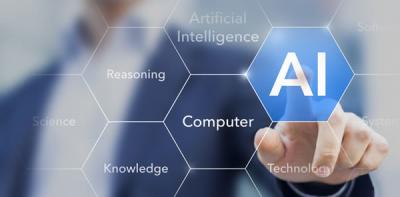Nov 28, 2017 - If your organisation is struggling to clear backlogs of integration projects, increase time to value and overcome resource and skills constraints, you’re not alone Eric Thoo, research director at Gartner (Computerworld) writes. The need to connect applications, systems, endpoints and users in complex, multi-organisation ecosystems is growing. This is forcing integration to become pervasive, which is a critical but complex competency that’s now foundational to enabling digital business transformation. Application leaders responsible for integration are having to empower almost every member of their organisation to make this new reality happen.
If your organisation is struggling to clear backlogs of integration projects, increase time to value and overcome resource and skills constraints, you’re not alone. Making pervasive integration capabilities adaptable, at scale and extensive, compels integration teams to seek new ways of accomplishing more with less. As the number of integration technologies continues to expand, making independently designed applications and data structures work together remains a complex challenge for enterprises.
If you’re seeking simpler ways to integrate applications into the enterprise, consider introducing integration platforms armed with artificial intelligence (AI) capabilities.
| AI-enabled integrationSeveral integration technology providers have already AI-enabled their platforms to simplify the development of integration flows, shorten the learning curve, lower skills requirements and assist in the execution of integration processes.
Some targeted, early business benefits of using AI in integration include:
- Lowering time and cost of integration by reducing usage complexity, and empowering less-technical roles to solve integration problems. For example, equipping business users to carry out integration tasks without or with minimal support from professional developers or integration specialists.
- Assisted access to a range of pre-packaged and configurable AI-infused integration artefacts for optimal alignment, as well as the deployment of application and data integration tasks through intuitive, guided designs.
- Conversational user experiences expedite efficiencies by assisting the creation of integration process or querying the operational state of the integration platform. This enables line-of-business leaders to connect systems and use independently designed applications and data structures as integrated solutions.
At this early stage, AI in integration platforms is beginning to bring together diverse, commonly required integration functionality. Some iPaaS providers – such as Dell Boomi's Boomi Suggest, Informatica's CLAIRE, SnapLogic's Iris Artificial Intelligence and Workato's Workbot – take advantage of their "integration eye in the sky" on cloud-native platforms and offer AI-enabled recommendations for integration development approaches based on collective patterns.
| Build recommendation enginesA prominent use of AI at present is to enable business roles to perform integration. This is provided through metadata sharing and analysis to build recommendation engines that automate the integration process.
Embedded in integration platforms, recommendation engines have the ability to use graph and cluster analyses on data usage characteristics. This is done by analysing things such as the frequency of data access by data type (how data is stored – via relational, object, document and other structures); the affinity of service components (which data is put together into query objects or mined to create query objects); and the identification of user credentials and job roles involved.
| Emergence of digital integrator technologiesAI techniques applied to integration are emerging as digital integrator technologies — that is, innovations that set out to facilitate the resolution of complex integration problems, including challenges of a scale that would not be addressable by conventional approaches.
Some functional characteristics of digital integrator technologies, such as making recommendations to improve the performance of your integration flow execution, are visible to integration developers. While others, such as helping integration tooling optimise its platform operations, are invisible to developers. These evolving innovations have far-reaching implications in terms of achieving the key dimensions of pervasive integration.
With AI-guided recommendation engines that use machine learning and inference algorithms to deliver step-by-step guidance, building data pipelines and application flows will ideally become an increasingly intuitive effort. This guidance allows diverse personas to use the recommendations of the AI engine to automate highly repetitive integration tasks, which expedites the clearance of integration backlogs that currently worry integration teams.
As the need to use diverse endpoints, deployment models and various integration patterns increases, the integration pipelines inferred by AI engines with access to discovered metadata, tagging and inferred analysis, can provide lessons to streamline and suggest which options to use when integrating applications and data.
This use of AI inside integration software potentially shortens the learning curve of both specialist and less technical integrators to manage data and business flows. This enables an extensive range of roles to perform integration tasks to pervasively address needs.
The use of AI techniques to power integration platforms and complement human capability is on the rise. Plan now for investigating, developing or further extending your integration competencies and technologies to engage in connected infrastructures and systems by including AI as part of your integration strategies and infrastructure.
Eric Thoo is a research director at Gartner, advising clients on data integration practices and technologies. He will speak about data integration strategy at the Gartner Data & Analytics Summit in Sydney on 26-27 February 2018.
| A Gartner release || November 28, 2017 ||

